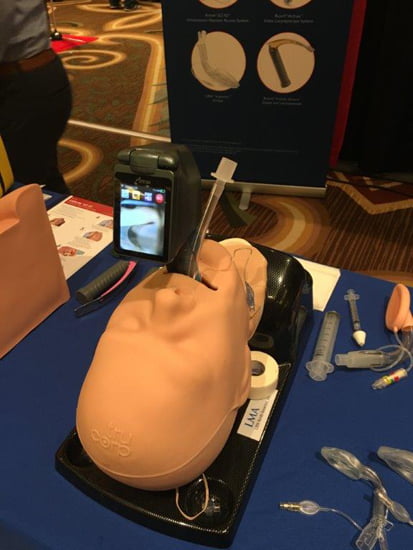
A video laryngoscope on display in 2016. (File Photo)
A study led by Vanderbilt University Medical Center compared two types of laryngoscopes used in tracheal intubation of critically ill patients.
The study found that the use of a video laryngoscope increased the success of intubation on the first attempt compared to the use of a direct laryngoscope. The trial, called DEVICE (DirEct Versus VIdeo LaryngosCopE), involved 1,417 patients from 17 emergency departments and ICUs in 11 hospitals across the country.
The study showed that successful intubation on the first attempt occurred in 71% of patients using a direct laryngoscope and 85% of patients using a video laryngoscope, indicating a 14% absolute increase in success with the video laryngoscope. The researchers also noted that the video laryngoscope was particularly beneficial for less experienced clinicians, potentially doubling the chances of successful intubation on the first try.
The study’s findings suggest that the video laryngoscope should be the first-line device for intubating critically ill adults in emergency departments and ICUs. However, further research is needed to compare different types of video laryngoscopes and determine which type is most effective.
The results were published in the New England Journal of Medicine.
Related
Keys to Success for Airway Management
Prehospital Management of Difficult Airways
Increasing Intubation First-Attempt Success Rates in Patients of All Ages

